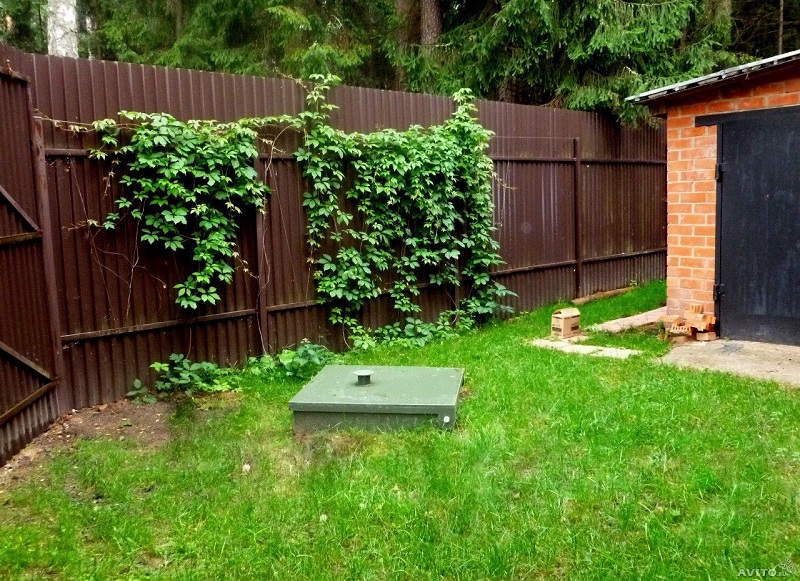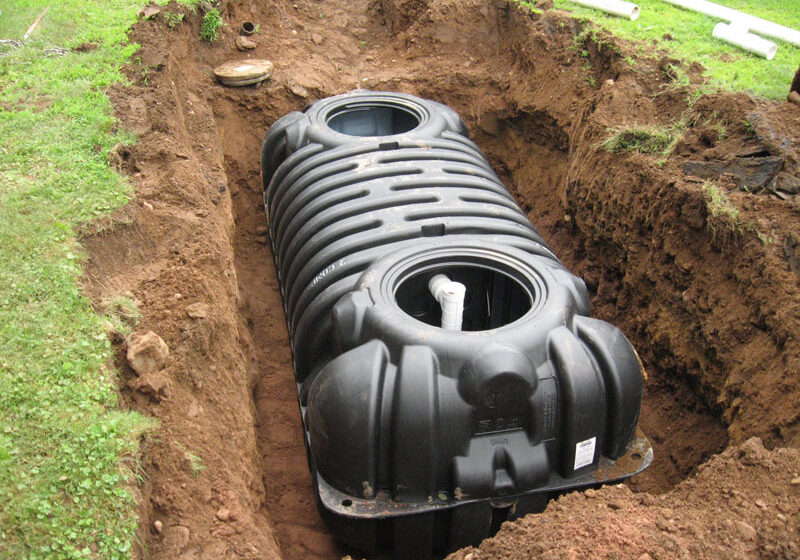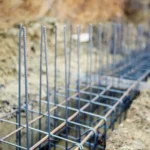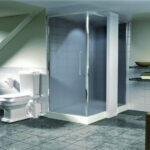We talk about what a septic tank is, what types of septic structures there are, and how to choose the best one for your cottage.
A septic tank is the most optimal and comfortable sewerage option for a summer residence. This equipment is a local installation, which is designed for the accumulation and purification of wastewater.
Some septic tanks independently clean and decompose the solid contents of the installation. Thanks to this, water from the structure can be released into the soil without fear. More budget models must be cleaned regularly using a vacuum cleaner. However, compared to conventional cesspools, cleaning the septic structure is needed much less frequently.
What determines the choice of a septic tank
To purchase suitable equipment, you must answer all the questions from this list:
- What is the average volume of sewage produced in a house in 24 hours?
- What kind of soil is the site located on and how deep is the groundwater? You need to know this to evaluate the possibility of creating filter fields.
- Will you live in the building permanently or is it intended for recreational use only?
- What is your approximate budget for installing the structure?
Once you have the necessary information, you can begin searching for the desired model of the structure.
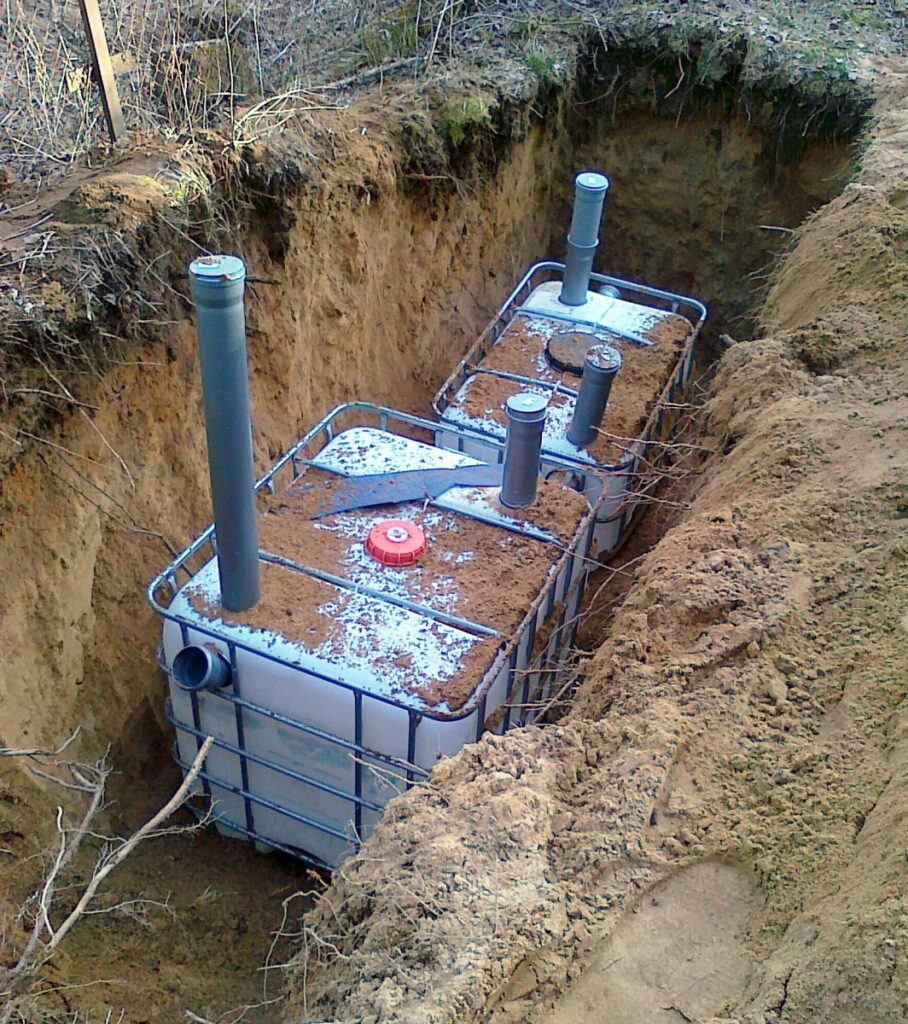
Selection parameters and types of septic tanks
Regardless of whether you want to make a septic tank for your cottage with your own hands or purchase a ready-made one, it is important to pay attention to the performance of the equipment:
- If less than a cubic meter of sewage is generated per day, choose a single-chamber model.
- For flow rates from 1 to 10 cubic meters, a two-chamber design should be installed.
- If you consume more than 10 cubic meters, you need a three-chamber structure.
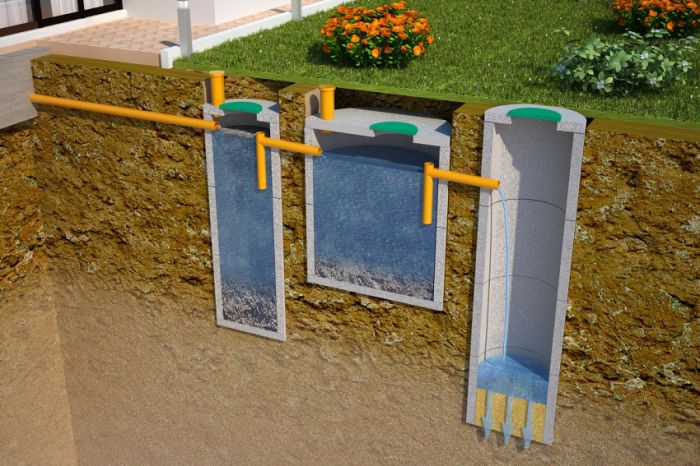
Another important point when choosing is the type of septic design based on the operating principle. There are 3 types in total: storage tanks, systems with anaerobic biological treatment and deep biological treatment stations.
- The best septic tank for a summer residence is storage. These installations require regular cleaning using sewage disposal equipment, but they are easy to install, inexpensive, and environmentally friendly. If you visit your cottage several times a year, then this is the most practical option.
- A more modern and comfortable model is a system with anaerobic biological treatment. The structure purifies water by 60%, it needs to be emptied once a year, it operates autonomously, and does not require constant monitoring.
- A deep bio-purification station is an ideal option for a private cottage. This equipment carries out a full processing cycle; the output produces process water, which can be released into the soil. However, such stations will cost much more than other models.
Septic construction material
If you want to buy a septic tank for your cottage in a store, most likely you will only find models with polypropylene bodies. If you plan to build the structure yourself, you have 3 options: metal, concrete, and fiberglass.
1. Metal septic tank
The first option is the most impractical since metal without anti-corrosion treatment on the inside and outside will quickly become unusable. Even a metal septic tank treated with a protective layer of anti-corrosion agent will last no more than 5 years.
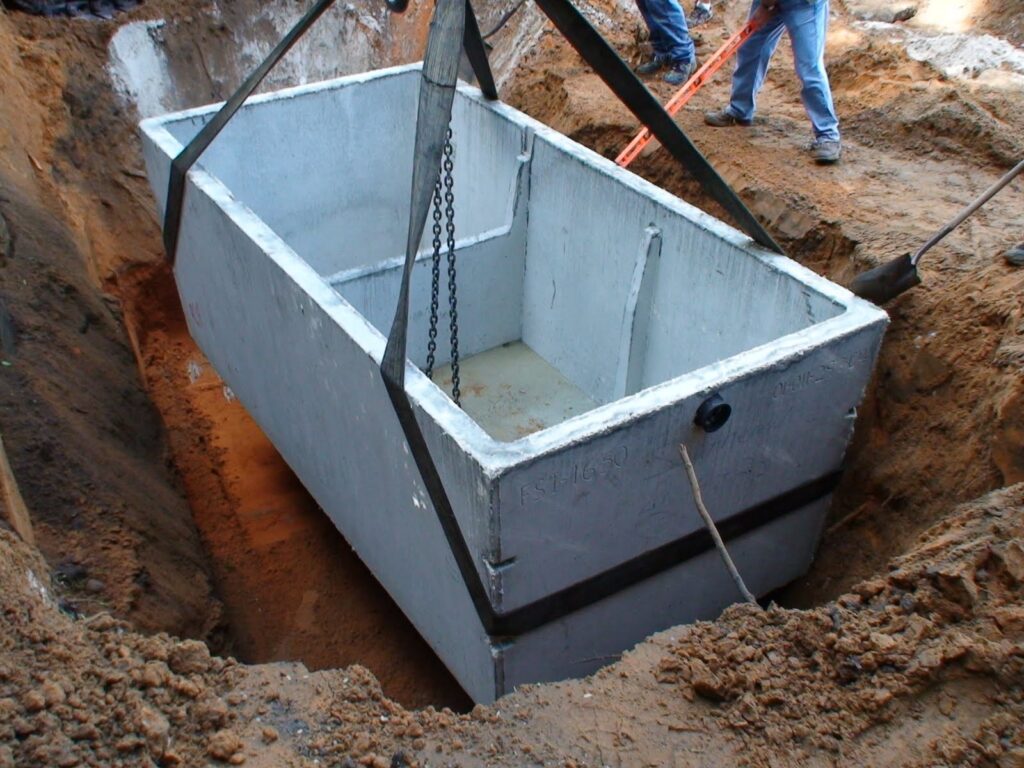
2. Concrete septic tank
Concrete septic construction requires a lot of time and effort. It is easier to make a prefabricated structure from concrete rings, but it will not be airtight enough. A monolithic septic tank is much more reliable.
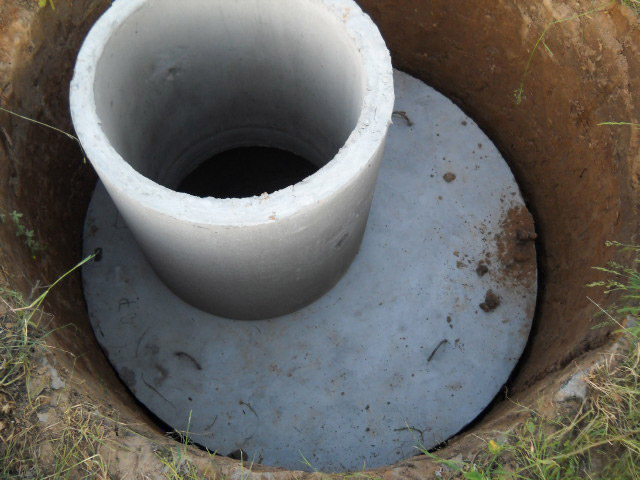
3. Fiberglass septic tank
Fiberglass is the best option for creating local sewerage. This is a lightweight and durable material with a long service life.
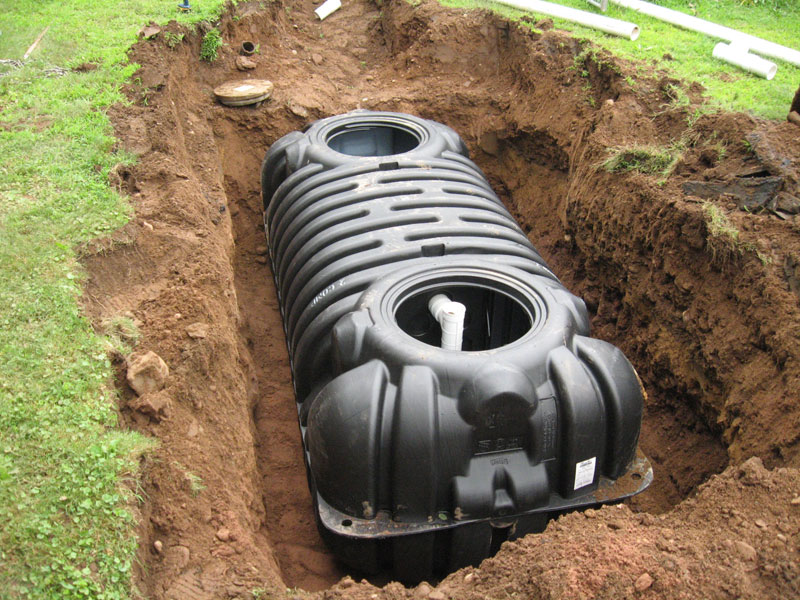
Tips for choosing a septic tank
After you have figured out the basic parameters for choosing a septic design, you should listen to the advice given by experts.
It is better to purchase a septic tank that requires minimal maintenance. A simply constructed structure requires virtually no control.

If possible, choose equipment that is independent of electricity. Save yourself the additional hassle of finding, transporting, and installing a generator, plus its maintenance.
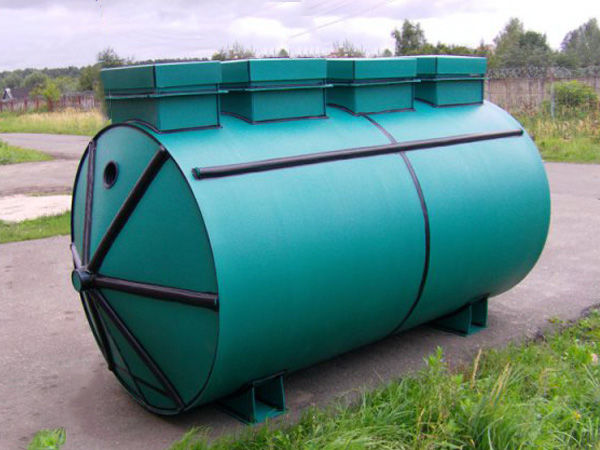
It is necessary to organize the discharge of treated water into the ground, and not onto the terrain. Otherwise, an environmental disaster may occur on your site.
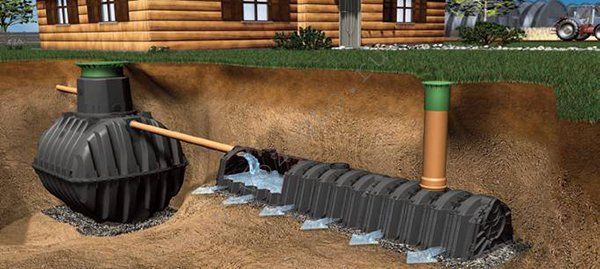
So, when choosing a suitable septic tank for your cottage, you need to take into account the water consumption, the type of soil on the site, and your financial capabilities. There is nothing difficult in choosing a septic design if you take the matter seriously.
